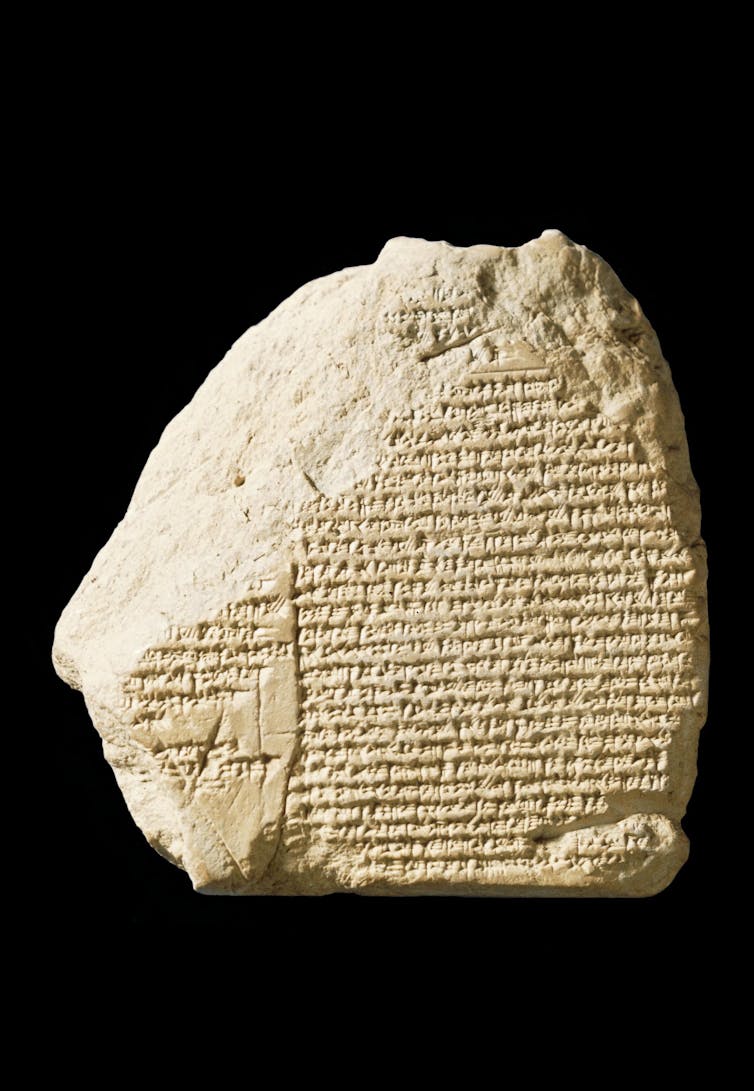With both parties agreeing to terms, the first stages of a peace plan in Gaza are in motion. US President Donald Trump is credited (especially in Israel and the US) with having played a vital role in this development.
But why have banners appeared in Israel depicting Trump with the caption “Cyrus the Great is alive”?
Who was Cyrus and what is he renowned for?
Founder of the Achaemenid Persian empire
Cyrus the Great was the founder of the Achaemenid Persian empire (550 BCE to 330 BCE).
Under Cyrus and his successors, the Persian empire stretched across a vast array of territories, including Iran, Mesopotamia (which includes parts of modern-day Turkey, Syria and Iraq), Egypt, Asia Minor (which is mostly modern-day Turkey) and Central Asia.
A key moment in this imperial expansion was Cyrus’ capture of Babylon and its surrounding territory (Babylonia) (mostly in modern-day Iraq) in 539 BCE.
The Babylonian king, Nabonidus, controlled large sections of Mesopotamia and northern Arabia. A surviving clay tablet called the Nabonidus chronicle outlines the alienation of his subjects. Unpopular religious reforms and his long absences from Babylon were among the grievances.

© The Trustees of the British Museum, CC BY-NC-SA
Soon after he defeated Nabonidus, Cyrus issued a decree freeing captive Jews (and others) in Babylon.
A comparatively humane approach to governing
Nebuchadnezzar II, king of the Babylonian empire from 605–562 BCE, had captured the kingdom of Judah (in modern-day Israel and Palestinian territories) in 587 BCE.
Due to rebellions, he ransacked Jerusalem and deported thousands of Jews to Babylon.
When Cyrus freed the Babylonian Jewish exiles almost 50 year later, many returned to Judah.
The biblical book of Ezra records the decree.
Cyrus, according to this version of the story, had been commanded by God to rebuild a temple at Jerusalem that Nebuchadnezzar II had destroyed. The decree released the Jewish exiles from Babylon to return to Jerusalem and rebuild it.
In the Old Testament book of Isaiah, Cyrus was chosen by God to free the Jews of Babylon.
For this reason, Cyrus became (and remains) a legendary figure in Jewish history, though he was not Jewish himself. He was more likely a devotee of Zoroastrianism, which was fervently embraced by his successors, including Darius I (who ruled 522-486 BCE).
An ancient clay tablet from Babylon suggests Cyrus’ occupation of Babylon was peaceful. It confirms the return of exiles, but not specifically Jewish ones. Known today as the “Cyrus cylinder”, it is sometimes referred to as an ancient declaration of human rights. A replica of the tablet is on permanent display at the UN headquarters in New York.
Cyrus was remembered in antiquity for what, at the time, was a comparatively humane approach to governing.
The Greek writer Xenophon, who wrote the Cyropedia (The Education of Cyrus) in about 370 BCE, noted that:
subjects he cared for and cherished as a father might care for his children, and they who came beneath his rule reverenced him like a father.
The benevolent and altruistic reputation of Cyrus was developed in his own reign and later. As one of history’s “winners”, Cyrus would be well-pleased with the propaganda that has continued to develop about his reign.
Conquest and wealth
Cyrus was, of course, a great warrior and strategist. One of his most famous conquests was the kingdom of Lydia (modern southwest Turkey) in about 546 BCE. Its king, Croesus, was known for his incredible wealth.
Cyrus initially ordered Croesus to be burned alive. But when the god Apollo sent a rain storm, Croesus was spared, according to the 5th century BCE Greek historian Herodotus. He then became a trusted advisor of Cyrus, adding to the Persian king’s reputation for benevolence.
Cyrus was also known for large-scale construction projects. The most famous was the palace complex at his capital, Pasargadae (modern southern Iran).
The palace and other buildings were set in the midst of magnificent paradise gardens.
Today, the most intact building at Pasargadae is the tomb of Cyrus. It has become a powerful symbol of Iranian and Persian nationalism. The legacy of Cyrus is still significant in Iran today.
So, the banners comparing Trump to Cyrus appear to be drawing on the story of Cyrus’ role in freeing Jewish captives. In this framing, Gaza is cast as Babylon and Trump as the new Cyrus.
One wonders what Cyrus the Great would think of the comparison.




